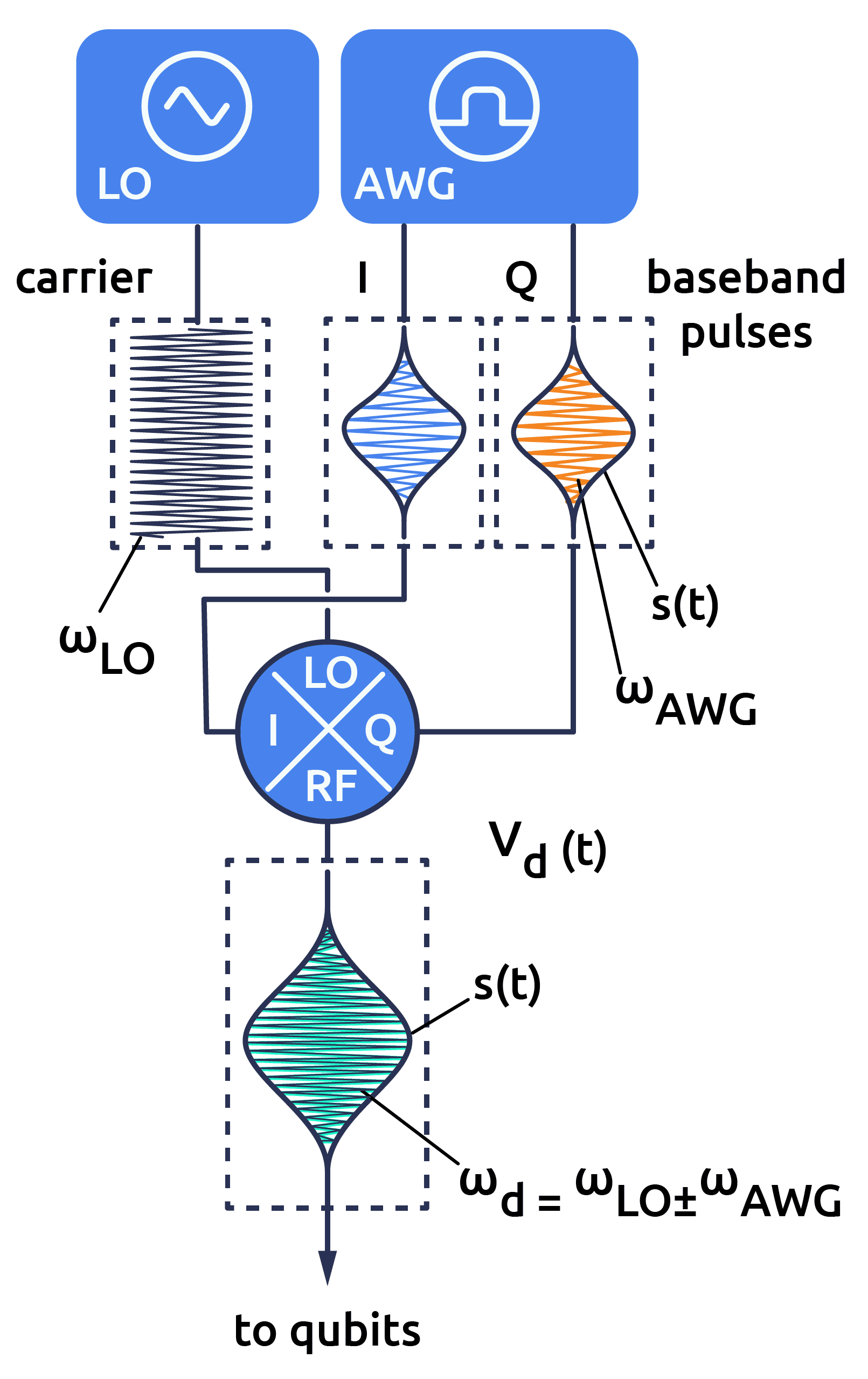Realistic Control Stack Modelling: Introduction
It is naïve to think that it is possible to do anything computationally meaningful with current qubit hardware without the control layer in a quantum control stack. Hardware diabolically sensitive to the slightest perturbation in the environment, such as superconducting qubits, Rydberg atoms, neutral atoms, etc., requires the most precise and delicate controlling humankind has ever devised.
The control layer itself involves paramount engineering. It employs hardware electronics that operate at extremely fast regimes. They are finely tuned to yield the best signal to manipulate the qubits. Often, this layer is composed of an arbitrary waveform generator, analogue-to -digital and a digital-to-analogue converters, a local oscillator, mixer, feedback system and cryogenic electronics. Besides the last two components, the rest are essential for generating a precisely tailored pulse to realise a specific quantum gate instruction (see the figure).

In a control layer, the arbitrary waveform generator is responsible for pulse generation in a desired shape, whilst a local oscillator produces a steady signal at a preset frequency. The output of these two devices gets mixed in a mixer and thence arrives at a target qubit. In an ideal world, the arbitrary waveform generator produces a pulse with an exact shape defined by the user, or a local oscillator outputs a perfect sine signal. In reality, these electronic devices suffer from different noise sources, hardware limitations imposed by their operational modes and ambient operational conditions. For instance, an arbitrary waveform generator has limited memory storage for the shape of the waveform, converts back and forth a digital to an analogue signal and vice versa, and has a finite response time to changes in the input signal. The local oscillator has a phase noise that hampers the steady generation of a sine signal.
In the Qruise toolset, to reliably and faithfully replicate a digital twin of a quantum control stack, we have modelled with care these electronic devices with their unique characteristics to enable a broad range of users to simulate real-world control layers, explore their limitations and experiment with them by tuning those factors; to gain insight about them and learn the effect they incur on the fidelity of a variety of quantum gate operations.
By the end of this blog series, the reader will be comfortable creating a control layer in the Qruise toolset. How to instantiate an arbitrary waveform generator, add a digital-to-analogue converter and mimic the effect of a finite rise time. We will walk through with the reader to implement a noisy local oscillator and add different noise processes to the amplitude and phase of the output signal. And finally, we will introduce advanced modelling of realistic electronic devices by making the reader acquainted with the transfer function formalism.
Share this post
Stay Informed with Our Newsletter
Subscribe to our newsletter to get the latest updates on our products and services.